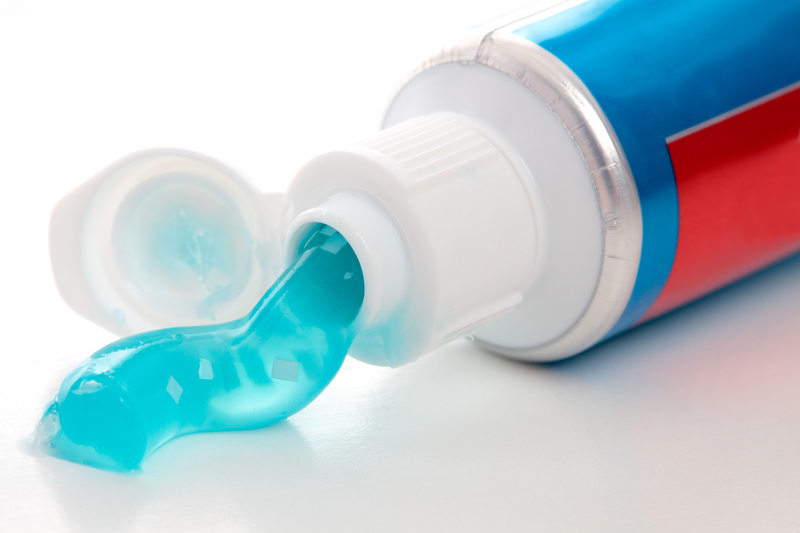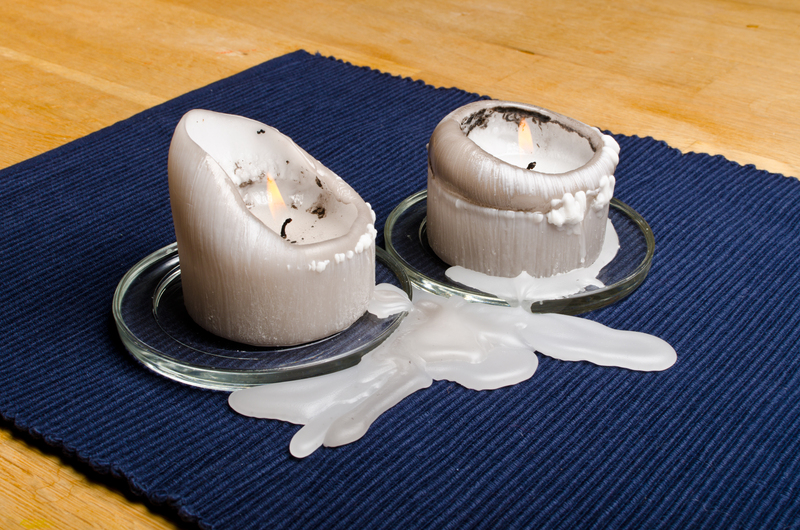Vanquish Grease: The Ultimate Strategy for Enamel Oven Trays
Posted on 08/06/2025
Vanquish Grease: The Ultimate Strategy for Enamel Oven Trays
If you love baking, roasting, or even grilling, there's a good chance that your enamel oven tray sees a lot of action in your kitchen. But with great utility comes great mess! Grease, food stains, and burnt-on residue can quickly transform a pristine oven tray into a stubborn cleaning challenge. However, don't despair--vanquishing grease is not only possible, it can be easy! In this comprehensive guide, we'll unveil the ultimate strategies to keep your enamel oven trays sparkling clean, extending their life and protecting your culinary masterpieces.
Why Caring for Your Enamel Oven Tray Matters
Enamel oven trays are cherished for their durability, non-stick properties, and their ability to withstand high temperatures. However, neglecting their care can lead to:
- Loss of shine and finish
- Stubborn grease build-up
- Impaired performance and flavor transfer
- Reduced lifespan of the tray
By following grease vanquishing strategies tailored for enamel oven trays, you ensure your kitchen stays hygienic, your food tastes its best, and your investment is protected.

Understanding the Enemy: Why Is Grease So Stubborn?
Grease is more than just fatty residue--it's a combination of oils, animal fats, carbohydrates, and proteins. When repeatedly exposed to heat, it can bond with the enamel, resulting in:
- Tough, carbonized stains
- Unpleasant odors
- Potential health hazards from burnt residue
The key to removing grease? The right combination of timing, methods, and products! Below, we break down the most effective strategies to eliminate grease and restore your oven tray's original glory.
Preparation: The First Step to Vanquishing Grease
1. Act Fast: The Power of Immediate Action
The longer grease sits, the tougher it is to remove. After using your oven tray:
- Let it cool slightly--never immerse a hot tray in cold water to avoid cracking the enamel.
- Wipe off excess grease with paper towels or a soft cloth.
Pro Tip: Don't allow grease to dry. Soak your tray in warm water as soon as possible to soften residue.
Top Strategies to Remove Grease from Enamel Oven Trays
2. The Classic Hot Water Soak
One of the simplest and most effective methods:
- Fill the tray with hot water and a squirt of liquid dish soap.
- Let it soak for 30-60 minutes. For tough stains, overnight soaking works wonders.
- Scrub gently with a non-abrasive sponge.
Why it Works:
Hot water softens grease, and detergent breaks down the fat molecules, enabling them to be rinsed away.
3. Baking Soda: The Gentle Abrasive
Baking soda is a champion for enamel trays as it gently buffs away stubborn stains without scratching the surface.
- Sprinkle a generous amount of _baking soda_ onto the damp tray.
- Add a bit of water to form a paste.
- Let it sit for 15-20 minutes.
- Scrub with a non-abrasive sponge or soft brush.
Result: The mild abrasive action of baking soda lifts grease and stains without damaging the enamel.
4. Vinegar Boost
Vinegar is well-known for its grease-cutting power:
- After rinsing off the first round of baking soda, spray or pour white vinegar over the stain.
- Allow it to fizz and work for 5-10 minutes.
- Wipe away with a damp cloth.
Double Power: Combine baking soda and vinegar for stubborn spots, but avoid frequent use to maintain the enamel's shine.
5. The Lemon Method
Lemon's citric acid naturally cuts through grease and deodorizes:
- Rub the cut side of a lemon over greasy areas.
- Let the juice sit for 10-15 minutes.
- Rinse thoroughly and dry.
Bonus: Leaves a fresh, natural scent!
6. Commercial Degreasers: Use With Care
There are specific oven tray cleaners and degreasers formulated for enamel trays. Look for:
- pH-balanced, non-abrasive formulas
- Products labeled "safe for enamel"
Caution: Always follow the manufacturer's instructions and test on a small area to avoid damaging the enamel finish.
7. Dishwasher: Can You Use It?
Some enamel oven trays are labeled dishwasher-safe. However, repeated exposure to harsh detergents and high temperatures may dull the finish over time. To extend the life of your tray:
- Hand wash whenever possible
- If using a dishwasher, select a gentle cycle
Advanced Strategies for Heavily Greased Enamel Oven Trays
8. Baking Powder & Hydrogen Peroxide Paste
For deeply embedded grease, create a paste:
- Mix baking powder and hydrogen peroxide to a thick consistency.
- Spread evenly over stubborn spots.
- Let sit for 20-30 minutes, then scrub gently.
- Rinse and dry thoroughly.
9. Steam Clean in the Oven
This method harnesses steam's power to loosen burnt-on grease:
- Preheat the oven to 130?C (266?F).
- Place a heatproof dish filled with water under the enamel tray.
- Let the steam penetrate for 20-30 minutes.
- Allow to cool, then wipe away softened grease.
10. Soap Pad Spot Treatment
Stubborn, isolated grease spots can be targeted with a soap-filled steel wool pad, but:
- Only use on spot areas and with minimal pressure.
- Rinse thoroughly to remove residue.
Warning: Avoid vigorous scrubbing, which can scratch enamel.
11. Enzyme Cleaners
These powerful cleaners break down organic grease using safe, biodegradable enzymes. Perfect for persistent stains:
- Follow manufacturer's instructions for dilution and application.
- Allow adequate time for the enzymes to work.
How to Maintain Grease-Free Enamel Oven Trays
12. Regular Cleaning Routine
- Wipe the tray after every use.
- Splash on hot water and mild soap immediately after cooking.
- Deep clean once a week if you use the tray often.
13. Baking Paper or Silicone Mats
Line your enamel tray with baking paper or reusable silicone mats to catch drips and reduce direct contact with food and grease.
14. Avoid Harsh Scrubbing Tools
Metal scouring pads and harsh abrasives can:
- Scratch the enamel surface
- Create weak spots leading to chipping
15. Don't Use Oven Cleaners Not Rated for Enamel
High-strength oven cleaners can damage enamel surfaces. Always choose products labeled "enamel safe".
16. Proper Storage
- Ensure trays are completely dry before stacking or storing.
- Use a paper towel or cloth between trays to prevent scratches.
Frequently Asked Questions: Enamel Tray Grease Removal
Can I use bleach on enamel oven trays?
Avoid using bleach. It can discolor or corrode enamel surfaces, and lingering odors may penetrate your food.
What about self-cleaning ovens?
Self-cleaning cycles are too intense for most enamel trays. Remove trays before activating the cycle unless your manufacturer states it is safe.
Is soaking overnight safe for all enamel trays?
For high-quality trays, yes--but always check manufacturer guidelines. Do not use boiling water, as extreme temperature changes can crack the enamel.
Is it okay to use soda crystals?
Soda crystals can cut through grease but may be too harsh for repeated use. Opt for mild dish soap or baking soda instead for regular cleaning.
Top Mistakes to Avoid When Cleaning Enamel Oven Trays
- Skipping regular wipe-downs: The longer grease sits, the harder it gets.
- Using sharp metal tools: They can irreversibly scratch or chip the enamel.
- Neglecting tray edges and corners: Grease loves to hide here!
- Allowing trays to air-dry in humid environments: This can cause water spots or even rust in exposed areas.

When Should You Replace Your Enamel Oven Tray?
Even with the best care, all oven trays eventually reach the end of their lifespan. Replace your enamel tray if you notice:
- Extensive chipping or cracks
- Rust development at exposed metal
- Persistent odors that won't go away
A compromised tray can affect both your food's safety and taste.
Conclusion: Make Enamel Oven Tray Grease a Thing of the Past!
Cleaning and grease vanquishing for enamel oven trays doesn't need to be a dreaded chore. Armed with a consistent routine, household ingredients, and a little know-how, your trays can remain as dazzling as new--batch after batch, roast after roast.
To summarize, here's the ultimate strategy to banish grease from enamel oven trays:
- Act fast after cooking--don't let grease dry out.
- Soak with hot, soapy water as your first defense.
- Use baking soda, vinegar, or lemon for stubborn stains.
- Select gentle brushes and sponges to preserve enamel.
- Employ advanced techniques like steam cleaning or enzyme cleaners in tough cases.
By integrating these grease-busting methods into your kitchen routine, you'll prolong your enamel oven tray's lifespan and enjoy delicious, clean-tasting food every time. Remember: a clean tray isn't just a pleasure to use--it's the secret ingredient to
If you found these strategies helpful, share this guide with fellow home chefs and make greasy, grimy oven trays a thing of the past. Vanquish grease today--the ultimate way!




